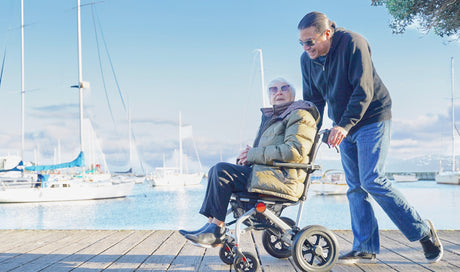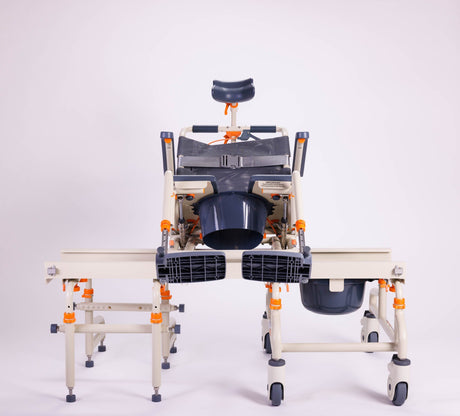We know a thing or two about the options available in the market, and there are many options that are best avoided for anyone with a significant mobility impairment. So how do you pick the best solution for your client, loved one, or yourself? We provide some insights on exactly this below:

Determining the level of bathing support needed
For any individual with significant mobility impairment, the assessment will likely involve determining the equipment and carer support combination, along with the most logical and comfortable routine for the user. The individual will if possible have input into the bathoom routine development, but the OT will be tasked with finding ways to carry out tasks. There are many different movements required in the bathroom, each with their own demands. Some of these include:
- Brushing teeth
- Getting into the shower
- Washing with body wash
- Washing hair
- Drying off after a shower
- Using the toilet
- Cleaning up after the toilet
An OT will determine the difficulty level of these for the individual and build a plan around carrying these out with as much independence by their client as possible. Equipment and carer support can then be provided according to needs.
It’s at this point where the requirements of the shower chair will be clear, and you can shop around for options with a list of criteria based on these needs. Many shower chairs, especially those in the low cost/quality category won’t be appropriate for significant mobility challenges.
OTs will often lead the research and source the best solution for their client and will make sure the chair can adeptly support the user in any situation it might be required.
Establish the type of shower configuration
For other shower chair options that are fixed in dimensions and format, you’ll have to really do some homework to make sure they’re going to work with the bathroom in question.

Solutions that support toilet use
Body support required
Adjustment
Price and funding
Of course the cost of different solutions will weigh into decision making if you’re responsible for purchasing the solution yourself. In some parts of the world and particular circumstances, the cost of bathroom equipment is funded. Showerbuddy is one such system that can be funded through programmes like the NDIS. When you shop for a shower chair, you’ll discover that beyond the cheap mass produced options, there are many tiers of shower chairs and transfer benches. These too are a mixed bag, with some reasonably expensive options offering little in the way of alleviating manual transfer.
Buy once, buy right – there’s a lot to be said for this approach with shower chairs.
Installation
Lifespan and warranty
We guarantee our frames for life – with other components like cushions and backrests designed for many years of use and easy swap out replacement to make Showerbuddy chairs long term solutions that you can depend on.




























![Toilet Training A Young Child With Mobility Challenges [And How A Shower Chair Can Help]](http://shower-buddy.com/cdn/shop/articles/toilet-training-disabled-child_520x500_a90e5234-d372-435d-aa56-8da15dd3836c.webp?v=1722557239&width=460)






















